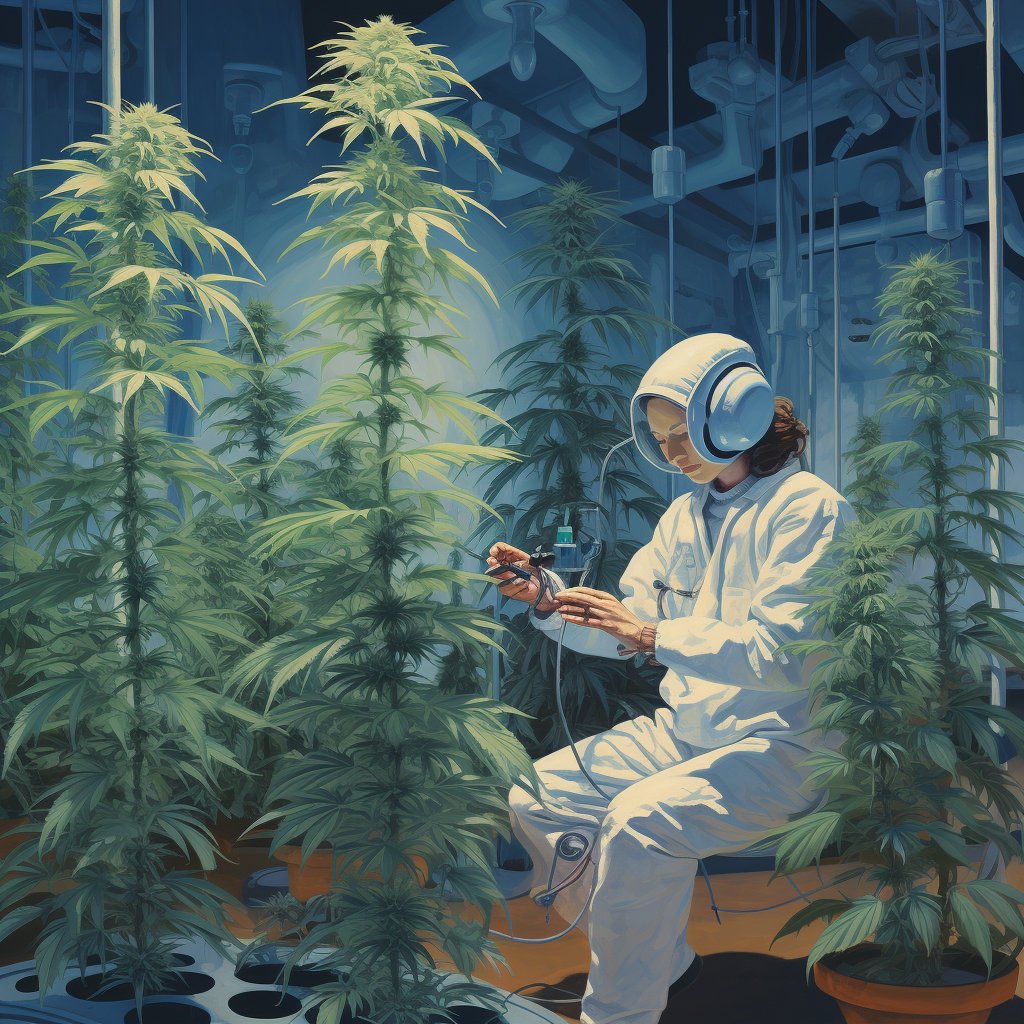Supercropping is a high-stress training (HST) technique used by cannabis growers to maximize the yield and potency of their plants. This method involves carefully bending and manipulating the branches of the plant to create minor injuries, triggering a defensive response that can lead to increased growth and productivity.
In this Article
The Science Behind Supercropping
The effectiveness of supercropping lies in the plant’s natural response to stress. When a plant is injured, it produces more plant hormones like auxins and cytokinins, which stimulate growth and cell division. By strategically causing minor damage to the plant, growers can direct these hormones to areas where they want to encourage more growth. This process also stimulates the plant to produce more resin, which contains the cannabinoids responsible for the plant’s therapeutic and psychoactive properties.
Benefits of Supercropping
- Increased yield: By creating multiple top colas instead of one, supercropping can significantly increase the overall yield of the plant.
- Enhanced potency: The stress from supercropping can stimulate the plant to produce more resin, leading to higher concentrations of cannabinoids and terpenes, thereby enhancing the potency of the buds.
- Improved light distribution: Supercropping can create a more even canopy, allowing light to reach more buds, leading to more uniform growth and development.
Step-by-Step Guide to Supercropping
- When to Supercrop: The best time to supercrop is during the vegetative stage when the plant is growing rapidly and can recover quickly from the stress.
- How to Supercrop: Choose a branch and gently squeeze it between your fingers until it becomes soft and pliable. Then, carefully bend the branch at a 90-degree angle. Be careful not to break the skin of the branch.
- Aftercare for Supercropped plants: Monitor the plant closely after supercropping. It should recover and start growing in the new direction within a few days. If the skin of the branch has been broken, it may be necessary to use tape or a bandage to help it heal.
Risks and Considerations in Supercropping
While supercropping can lead to significant benefits, it’s not without risks. There’s always a chance of causing too much damage to the plant, which could stunt its growth or even kill it. It’s also a time-consuming process that requires a good understanding of plant physiology and a gentle touch. However, with practice and patience, supercropping can be a powerful tool in the cannabis grower’s arsenal.
Advanced Supercropping Techniques
Supercropping can be combined with other plant training techniques to maximize yield and potency.
- Low Stress Training (LST): This involves gently bending and tying down branches to create a more even canopy and expose more bud sites to light. When combined with supercropping, it can lead to even greater yields.
- Topping: This involves cutting off the top of the plant to encourage it to grow two new branches from the cut site. Topping followed by supercropping these new branches can create a bushier plant with more top colas.
- FIMing: Similar to topping, FIMing (which stands for “F*** I missed”) involves cutting off less of the top, leading to even more new branches. FIMing and then supercropping these new branches can lead to a very high yield.
Repeated Supercropping: Some growers choose to supercrop their plants multiple times during the vegetative stage to create a very bushy plant with many top colas. This requires careful monitoring to ensure the plant recovers from each round of supercropping.
FAQs
How long does it take to recover from supercropping?
The recovery time can vary depending on the health and vigor of the plant, but most plants will start to recover and grow in the new direction within a few days.
Does supercropping help plants become stronger?
Yes, the process of healing from the minor injuries caused by supercropping can make the plant stronger and more resilient.
What are super cropping methods?
The main method involves carefully bending and slightly damaging the branches to stimulate growth. This can be done by hand or with the help of tools like pliers.
How often should you Supercrop?
This depends on the specific plant and the grower’s goals. Some growers supercrop only once during the vegetative stage, while others may do it multiple times. It’s important to give the plant time to recover between each round of supercropping.
Reported Opinions
Many growers have found success with supercropping. For example, one grower reported a 20% increase in yield after supercropping their plants. Another grower found that supercropping not only increased yield but also improved the potency of their buds.
Experts recommend starting with a healthy, vigorous plant and being gentle when bending the branches. They also stress the importance of monitoring the plant closely after supercropping to ensure it recovers well.
Summary
Supercropping is a powerful technique that can significantly increase the yield and potency of cannabis plants. It involves a careful balance of stress and recovery, and while it can be time-consuming, the results can be well worth the effort. Whether you’re a novice grower or an experienced cultivator, supercropping can be a valuable addition to your cannabis growing toolkit. So why not give it a try? With patience, practice, and a gentle touch, you might be surprised at just how much you can improve your cannabis harvest.





